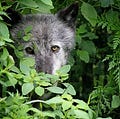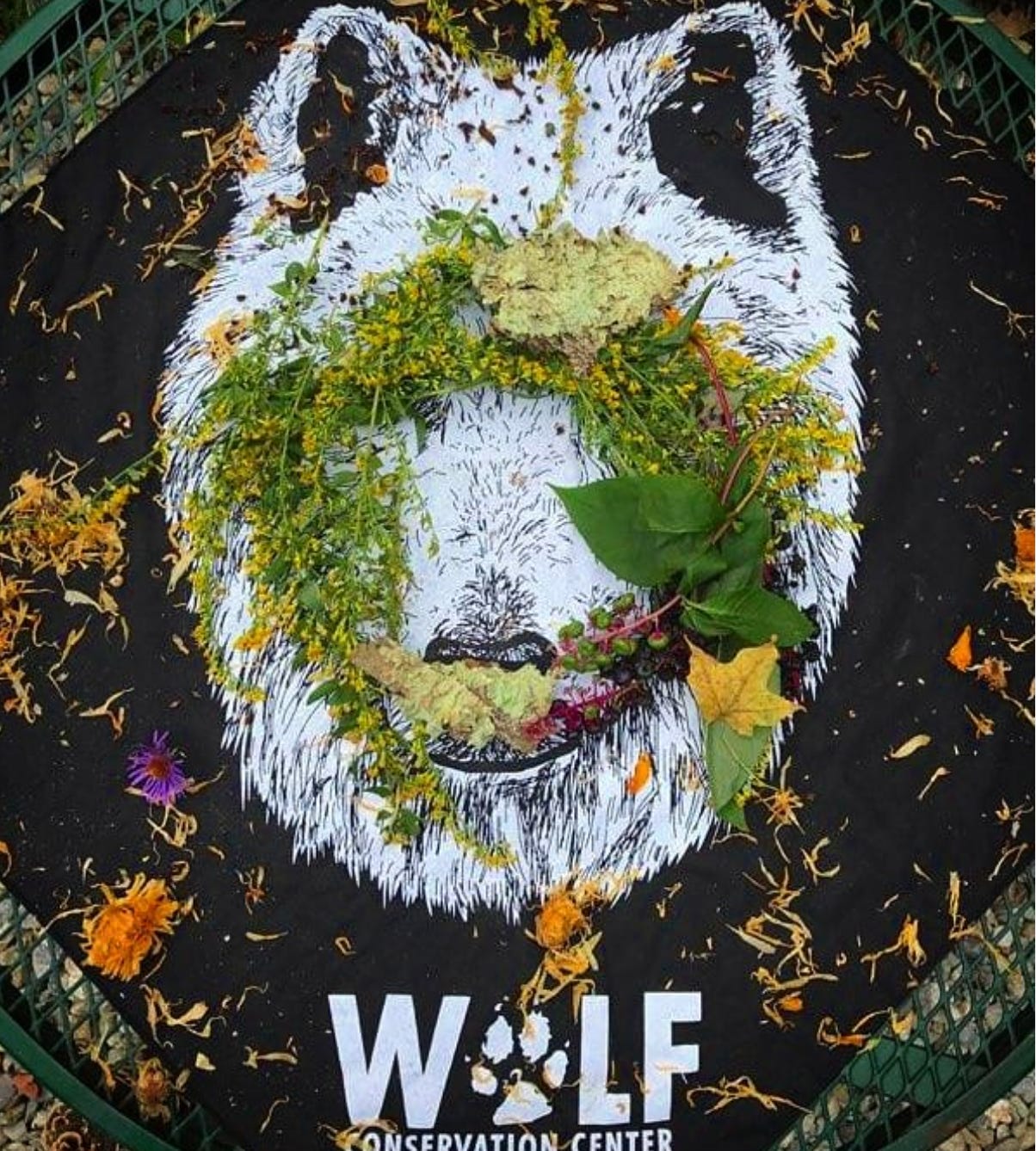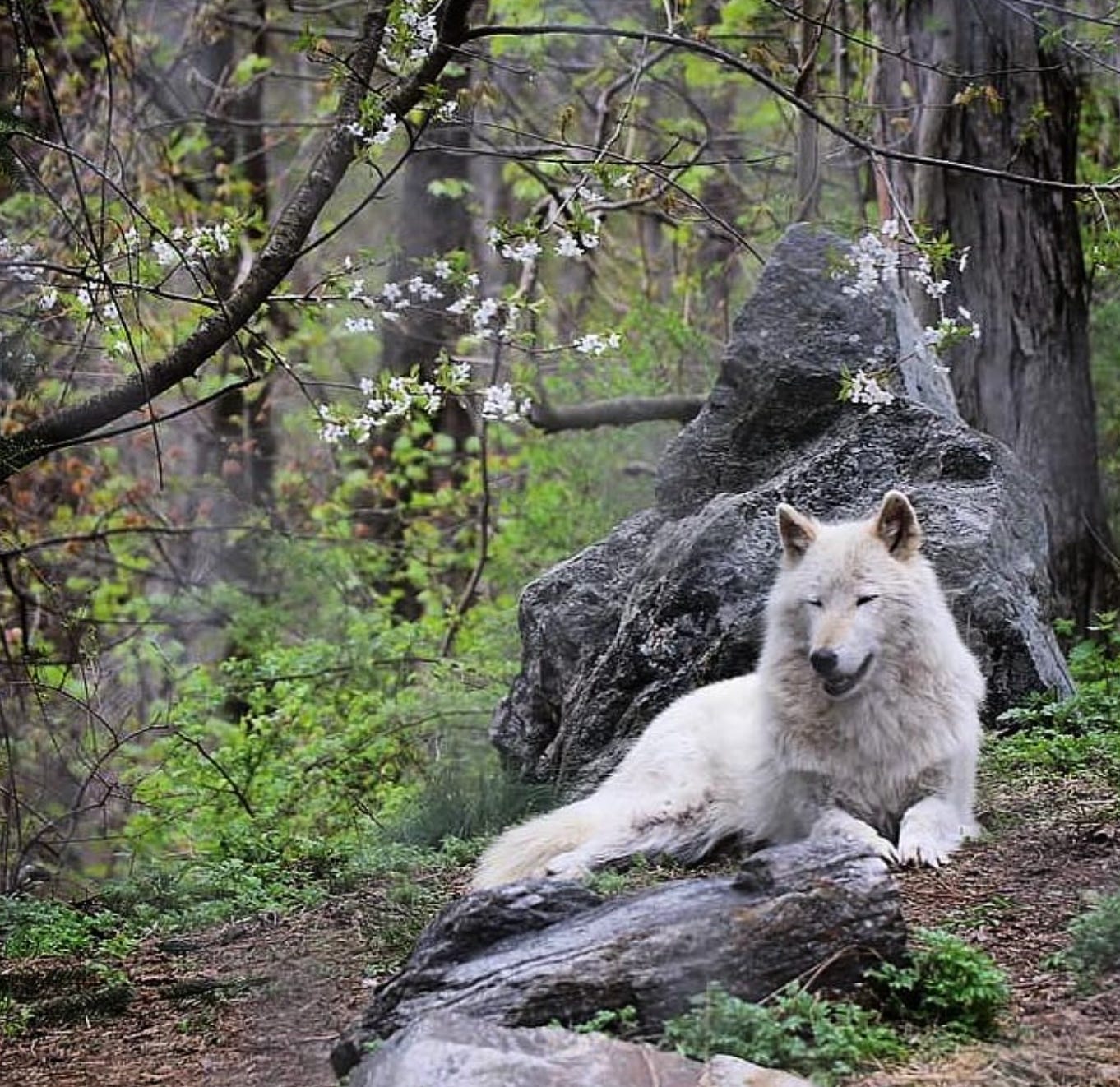Wolf Awareness Week ended on Saturday. Since 1996, the third week of October has been designated as National Wolf Awareness Week. A time to dispel misinformation about wolves and advocate on their behalf. For centuries, the keystone species have been portrayed as vicious predators. This false narrative rooted in European and Biblical lore, has led to their persecution and endangerment.
Predatory villains in tales like Little Red Riding Hood and metaphors for evil in Christian literature, wolves have seeped into our consciousness as inherently bad, vicious, and violent. But this is not true. These majestic animals are essential ecological stewards that live in tight knit, well-organized, loving families. When wolves hunt, they kill sick, weak and injured animals and support other species with their leftovers — coyotes, grizzly bears, black bears, and eagles have all been seen dining on wolf kills. Some historians believe that humans learned to hunt by watching and imitating wolves and that at some points in history, we had a mutually beneficial relationship, helping each other survive. These canine relatives roamed the Americas over 700,000 years ago, long before humans set foot on the soil.
My latest book, Earthly Bodies: Embracing Animal Nature begins with wolves. The four sections of the book—enclosures, rehabilitation, soft release, and homing—follow the arc of an injured animal’s return to nature and home. And, in our case, a more embodied, instinctual self. A self that heeds circadian rhythms, embraces pleasure, maintains necessary boundaries and is able to express anger instead of bottling it up inside.
Aggression toward our animal bodies and animal kin is routine. Just as many of us have been conditioned to suppress our desires and instincts, wolves have been demonized for their natural behaviors.
As many of us celebrate the true nature of wolves and work their behalf, it is hunting season in Montana, Wisconsin, Idaho, Montana, and Wyoming. For years, Montana imposed strict quotas limiting the number of wolves hunters could kill in the two districts north of Yellowstone. But during the ecologically disastrous Trump years those restrictions were lifted, allowing wolf-killing by cruel and archaic means: use of traps and snares, unlimited quotas, extended hunting and trapping seasons. And today it is not any better. The Biden Administration is seeking to remove federal protections for wolves. Even after the horrific wolf torture earlier this year, Wyoming is looking to codify running over wolves with snowmobiles into law. In Idaho, night time hunting, aerial gunning and killing pups in dens is allowed. Idaho also designated $200,000 to “cover expenses incurred” by private individuals while killing wolves—essentially reinstating a bounty on the keystone species.
If you’re overwhelmed by all of this like I am, I recommend Project Coyote’s resources that clearly state what you can do.
This was Project Coyote founder, Camilla Fox’s favorite quote from Earthly Bodies which she read at a recent webinar:
As our cultural landscape undergoes seismic shifts— injustice reckoned with, true history uncovered, and outdated myths composted— it is time to do away with the ridiculous myth of the Big Bad Wolf. Few animals are as misunderstood and misrepresented as the wolf, but wolves are very much like us: intelligent, family oriented, loyal. Although, unlike wolves, we have become a threat to the natural world from which we evolved. We might also need to examine our limiting, sometimes cruel inner dialogue, which encloses our own lives, and begin the work of rewriting stories. It’s not just our experience that informs our mental and physical health but what we have come to believe.
Framing nature as "other," alienates us from our planet, our home, leading us to lose touch with our interdependent roots.
Instead, we might weave the wisdom of the wild into the fabric of our human lives; transforming irrational fears of animals like wolves into respect, and transforming feelings of isolation into the reality of interconnectedness. When we separate ourselves from the wild, we diminish our own wholeness; silencing howls that ache to be heard.
By understanding and empathizing with wolves, we can challenge harmful stereotypes, stop trying to control the wild and maybe even embrace our own animal nature.
When we learn to speak the language of Earth, howling is not a threat, but a song of belonging.
Two of my recent book events included a howl, inspired by my description of howling with wolves at the Wolf Conservation Center which I wrote about in my book. My friend Katrina led a group howl at my book launch (pictured here), and Sy Montgomery suggested a howl at our recent event with Toadstool Books in New Hampshire. It seems that the idea of a group howl has a certain appeal! As Sy said, "Maybe consider always leading a group howl in bookstores, to attract folks to the reading? That was fabulous!" So, if you come to one of my events, be prepared to howl.

SOME RESOURCES:
Non-profit Organizations:
Project Coyote
Wolf Conservation Center
Defenders Of Wildlife
Films:
Medicine Of The Wolf by Julia Huffman
Never Cry Wolf based on the book by Farley Mowat
Nat Geo series about Artic Wolves
Books:
Wolfish, by Erica Berry
Never Cry Wolf, by Farley Mowat
Women Who Run With The Wolves, by Clarissa Pinkola Estes
Visual Art:
This shadow puppet show written and performed by artists Sonya Nina Montenegro of The Far Woods always brings me to tears. Nina and Sonya are part of a new Wild Voices Collective a new iniative that will launch later this year.






